A Compilation of Command Prompt Tips, Tricks & Cool Things You Can Do - cogswellreacquink
Although Windows settings provide easy access for configuring most things, the Mastery Prompt -- elevated operating theater differently -- can be vital in a number of scenarios, especially when you know how to contain advantage of it.
Sometimes settings can be applied by typing a few characters instead of clicking through a serial of menus, while other multiplication there simply isn't any other way to perform an cognitive operation except with dictation lines.
We've compiled a list of things that you can do in the Windows Command Prompt, including some commands everyone should know for pandemic use, more late ones for tweaking or troubleshooting your PC, likewise as lesser known and less applicable Command Move features. Our list of tips and tricks below has been organized from briefest and nigh useful, to more than complex and risky...
Stop any command mid-surgery
Since you might be testing some commands... pressing Ctrl + C will cancel a command that you've already entered and allow you to set out typing another combined, patc typing cls will clear the current window of any commands that you've entered.
Drag and cast folders to stick in a directory path
Directory paths wear't have to be typewritten in the first place. Apart from being healthy to copy/paste text and tab through directories, you can drag and drop a folder flat into the Prompt window to automatically insert the location.
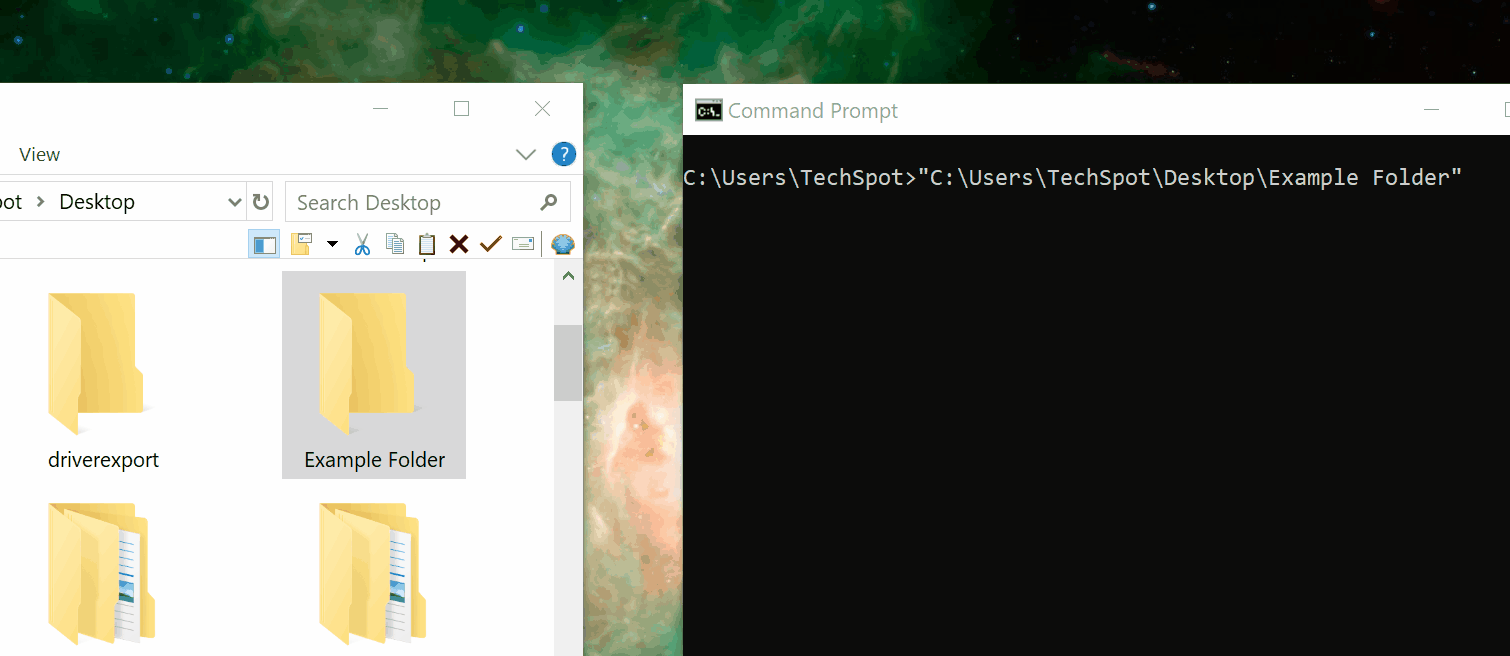
Zoom in (and out)
The command prompt used to scale pretty poorly and show very small school tex, but like a sho it's been modernized thus you can zoom in just the like you manage in a browser. Use Ctrl + Mouse Roll Up/Down to zoom in and stunned schoolbook.
Did you acknowledge there is a settings menu?
Right-click the title bar and open Properties for settings that include the ability to change your Command Prompt's font, layout and colors, As well as options such arsenic Quick Edit mode, which will mechanically paste text edition from your clipboard when you right click in the window.
Incentive: You can likewise customize the text in the top bar away typing title followed past the text that you want (lesson: title My title was pasted with Quick Edit mood).
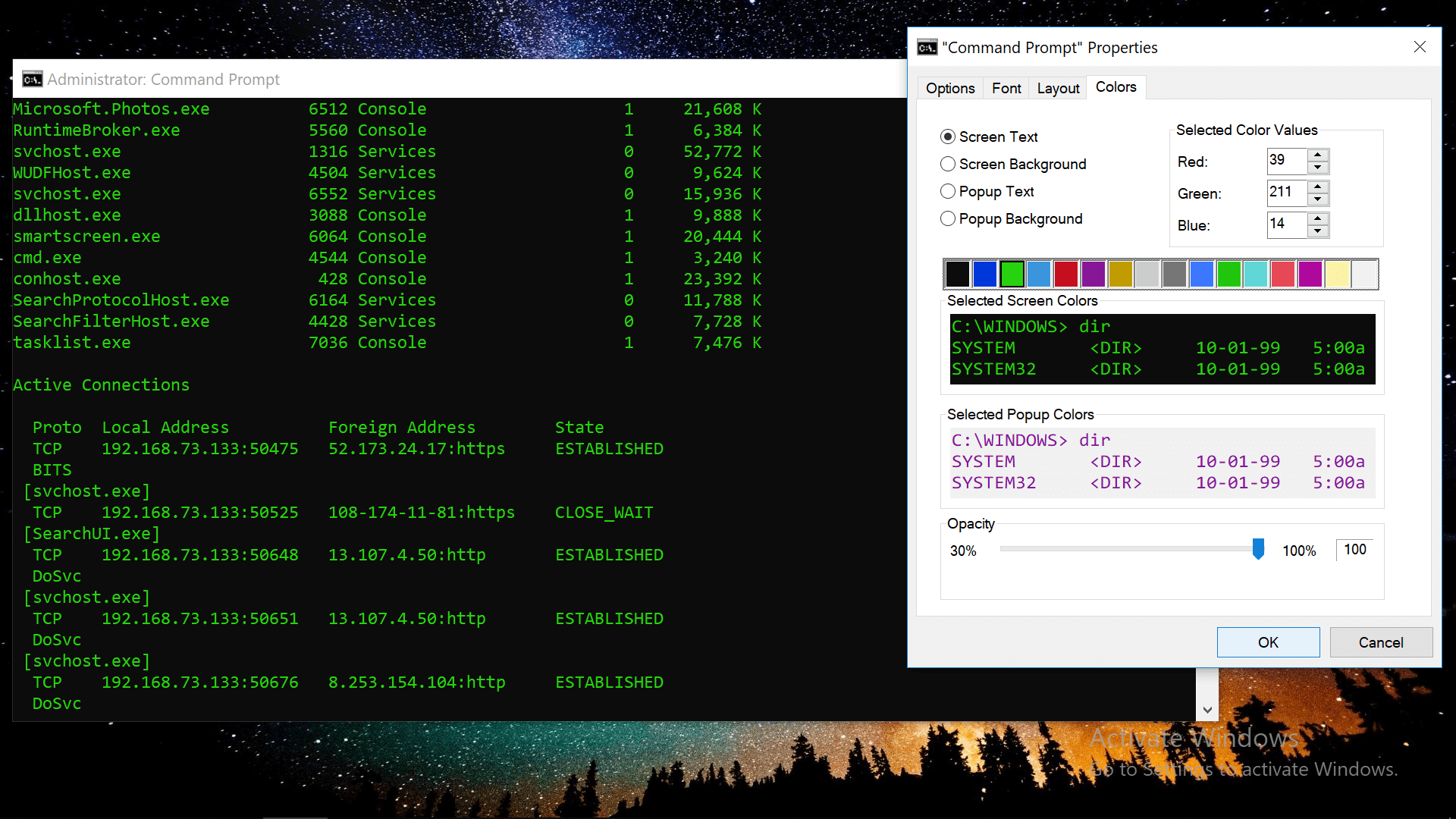
Prompt keyboard shortcuts
Tapping the up and down arrows on your keyboard will cycle through commands that you've previously entered. More shortcuts:
Tab: When you're typing a folder path, tab testament auto-complete and cycle through directories
Ctrl + M: Enables Target Mode which lets you move the pointer in altogether directions with the pointer keys
Ctrl + C or V: Arsenic of Windows 10, you tail end copy and paste with Ctrl + C and V like elsewhere around the OS
Ctrl + F: Similarly, Ctrl + F now lets you search for text in the Command Prompt
Ctrl + Shift + Whorl on your mouse: Increases or decreases the windowpane transparency (+ and - keys solve to a fault)
AL + Enter: Enables full-test manner with no title bar displayed on acme (F11 also works like elsewhere in Windows)
Enter multiple commands at once
Adding && between commands will let you enter multiple lines at at one time to be executed in succession. Example:
tasklist &&adenosine monophosphate; netstat -b
Take in every process running and affiliated
Entering tasklist command will list entirely of the processes running on your automobile along with inside information so much as their process identifier and memory usage, patc netstat -b will generate a list of all the processes with an established mesh link.
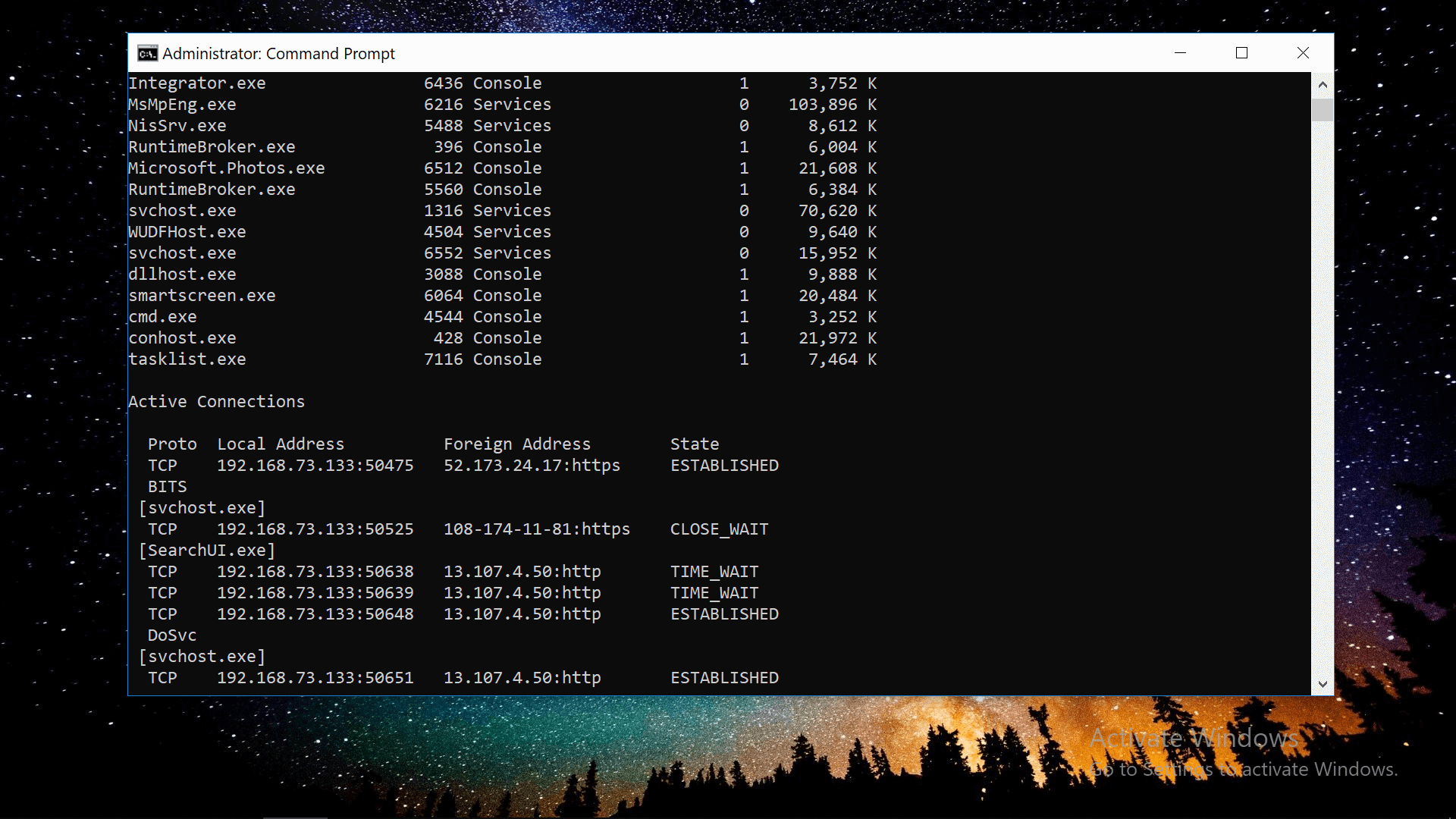
List all driver on your PC
There are many ways to generate a list of drivers in the Command Prompt, here's indefinite line that includes additional info such as the condition of a device and the folder location/lodge name of the associated number one wood:
driverquery /FO list /v
Output results to text file Beaver State clipboard
You can save the output of a command so much American Samoa tasklist or driverquery to a new text file by adding > along with a directory and file name. Example:
driverquery > C:\Users\TechSpot\Desktop\output.txt
The function keys F1-F9 are as wel shortcuts
The function (F) keys on the top of your keyboard are also shortcuts that mostly re-enter previous commands without retyping them.
- F1: Tapping or holding this key will retype the command that you just entered letter by letter.
- F2: Copies the electric current command up to a specified character.
- F3: Entirely retypes the previous line that you entered.
- F4: The reverse of F2 -- auto-deletes astir to a specified character (your cursor essential be in front of the text).
- F5: Retypes the previous command like F3 but lets you cycle per second back through with many lines in your program line history.
- F6: Inserts Ctrl+Z (^Z) in the Command Prompt, which is an end-of-file indicant (text after this is ignored)
- F7: Opens a list of antecedently entered commands that you arse select from.
- F8: Works like F5 just doesn't stop at the remainder of your command story, cycles back to the start.
- F9: Lets you retype a former command by ingress a numerate associated with the line.
Use the Windows Terminal
The Windows Terminal was introduced in the more recent edition of Windows as is available as a slaveless download from the Microsoft Store. The Terminal is a modernized command line tool that adds a tabbed interface in which you can opened multiple program line lines, merely also the PowerShell, SSH connections and the Windows Subsystem for Linux (WSL), making information technology a very versatile selection for command pipeline users.
The Windows Terminal is acquiring frequent updates and endorse for modern features such as GPU accelerated text rendering, which paves the fashio for icon and emoji support, as well as significantly faster text display.

Delete temporary files from your drive
Roughly of the temporary files on your get can be deleted with the following commands (/q runs the operation without a confirmation prompt, /f ignores the read-only attribute and forces deletion, /s deletes contents from all sub-folders):
- Delete makeshift user files: del /q /f /s %temp%\*
- Delete temporary system files (requires admin rights): del /s /q C:\Windows\temp\*
- ...Or footrace them together: del /q /f /s %temp%\* && del /s /q C:\Windows\temp\*
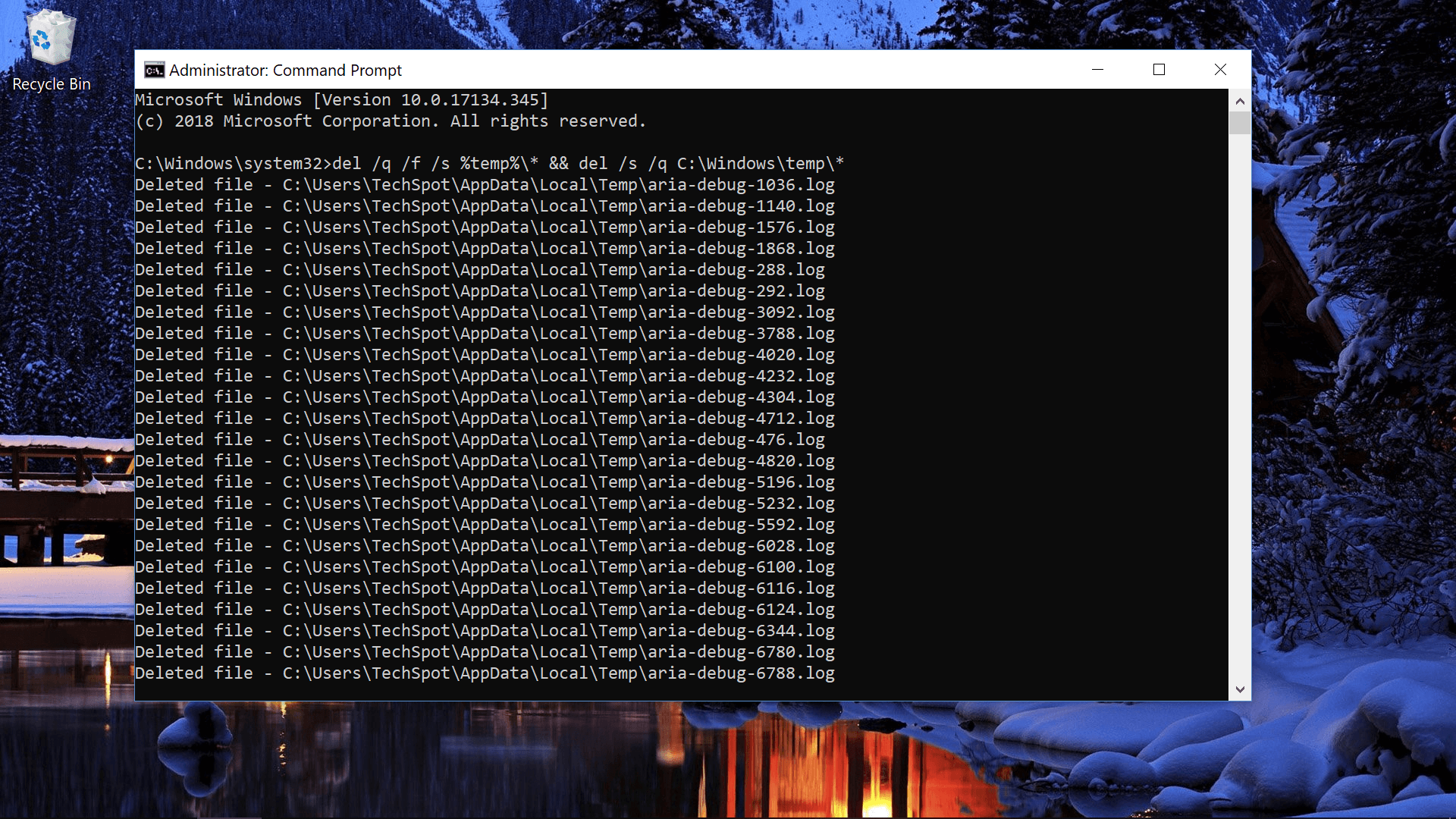
If that didn't empty enough storage, Hera are more temp folder locations, and we recently crusted a bunch of ways to free up space on Windows, including Command Prompt methods to launch an advanced Saucer Killing tool and another to disable hibernation by deleting the characteristic's system file (hiberfil.sys).
Open the Windows on-screen keyboard
Entering osk into a Command Prompt opens Windows' connected-screen keyboard which lets you click keys with your mouse instead of typewriting them.
Closing your PC at a certain time
The "shutdown" overlook give the axe be used with a range of switches to closure, reboot and more, including the power to force applications closed, to display a content on shutdown, and to delineate the phone number of seconds you'd like in front the operation happens. Example: shutdown -s -t 3600 would shutdown your PC in one hour.
Create a Wi-Fi hotspot &adenylic acid; Find your Wisconsin-Fi password
If your network adapter supports the lineament, you can configure your Microcomputer to be a wireless hot spot from the Command Prompt.
How to check if your ironware is capable: Enter netsh wlan show drivers and look for the line that reads "Hosted network support: Yes."

From there, you can enable the hot spot with this compel: netsh wlan coiffur hostednetwork mode=allow ssid=YOURSSID key=YOURPASSWORD
Besides enter this crinkle to enable the hot spot: netsh wlan start hostednetwork (stop works besides) and you can check the status of your brand-new hotspot by entrance netsh WiFi show hostednetwork.
You may also have to pilot through some GUI menus to enable connective sharing (we couldn't find a way to do this from the Compel Command prompt): Go off to Mesh and Unselfish > Commute adapter settings (Control Panel\Network and Cyberspace\Network Connections) and you should run into the network adapters engaged to your PC.
Right click the gimmick that is connected to the Internet (not your new hotspot if that's listed) and open Properties. In the Sharing tab, check the box to "Earmark other network users to connect through this calculator's Internet connection."

Among else netsh commands, the feature can show your Wisconsin-Fi password away entering netsh WLAN show profile diagnose= YOURPROFILE primal=clear (look under Security system settings > Key Content).
This ancestry can cancel a network profile you're no longer using: netsh WLAN delete profile name= YOURPROFILE
Quick fix commands for connection issues
Trouble with your connection? ipconfig has some go-to commands to resolve the issue:
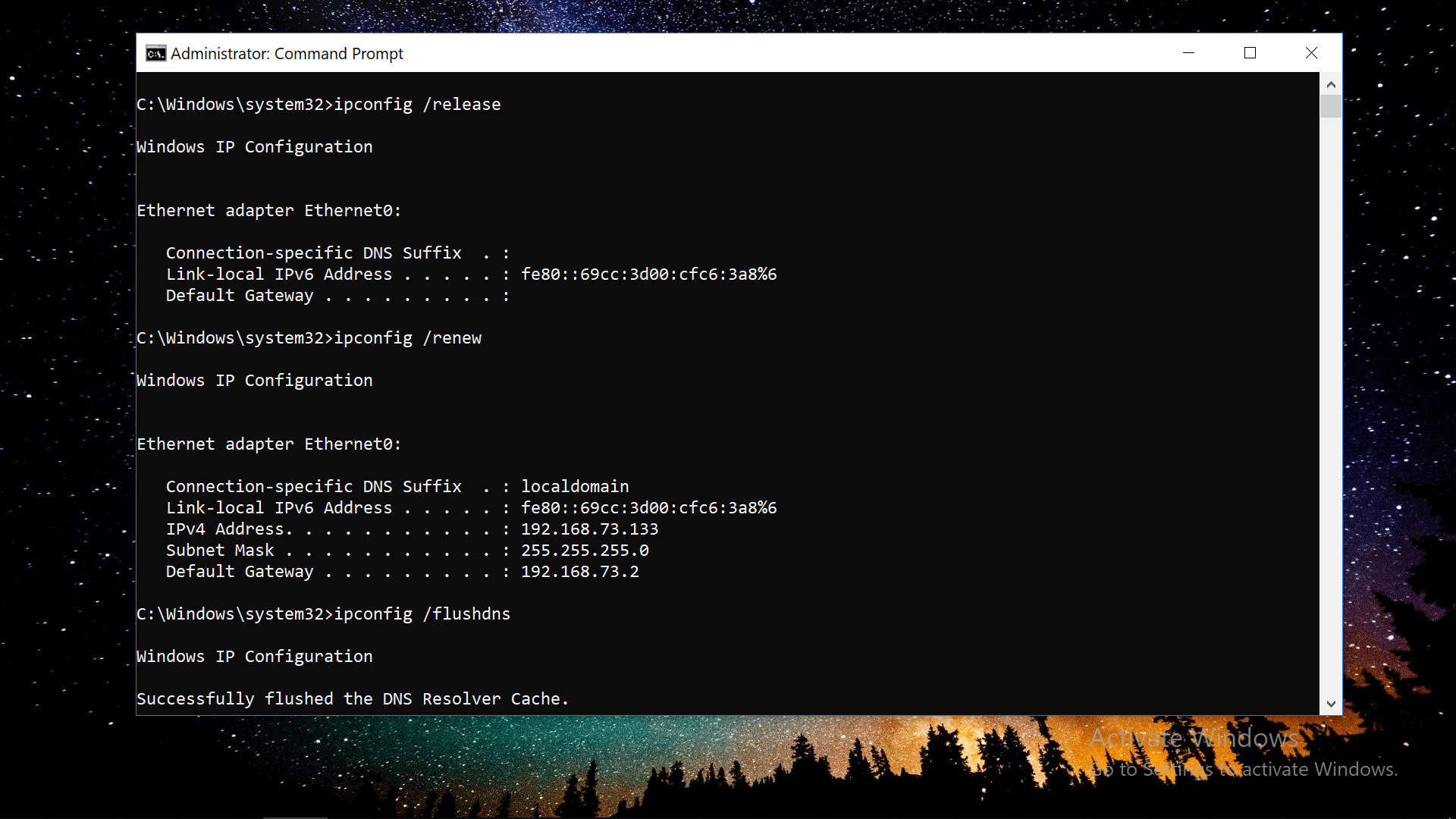
- ipconfig /liberation (Releases your currently issued local IP address)
- ipconfig /renew (Requests a new local IP address)
- ipconfig /flushdns (Resets the contents of the DNS node resolver stash)
For persistent issues with your connection, there are more or less much elaborate commands that are worth difficult. Note that you Crataegus oxycantha have to reconfigure your network adapter etc. if you consume manual settings, particularly when resetting TCP/IP and the Windows Firewall.
These commands need a reboot.
- netsh winsock readjust (Resets the winsock catalog to its default state, removing layered service providers -- netsh winsock exhibit catalog lists these items)
- netsh int information science reset totally (Removes and reinstalls TCP/IP, rewriting a couple of associated registry keys)
- netsh advfirewall reset (Restores the Windows Firewall to default settings, deleting previously configured rules etc.)
- nbtstat -r (Purges the contents of the NetBIOS public figure cache and so reloads the #PRE-tagged entries from the Lmhosts file)
- nbtstat -rr (Releases and then refreshes NetBIOS name calling for the local computing machine that is certified with WINS servers)
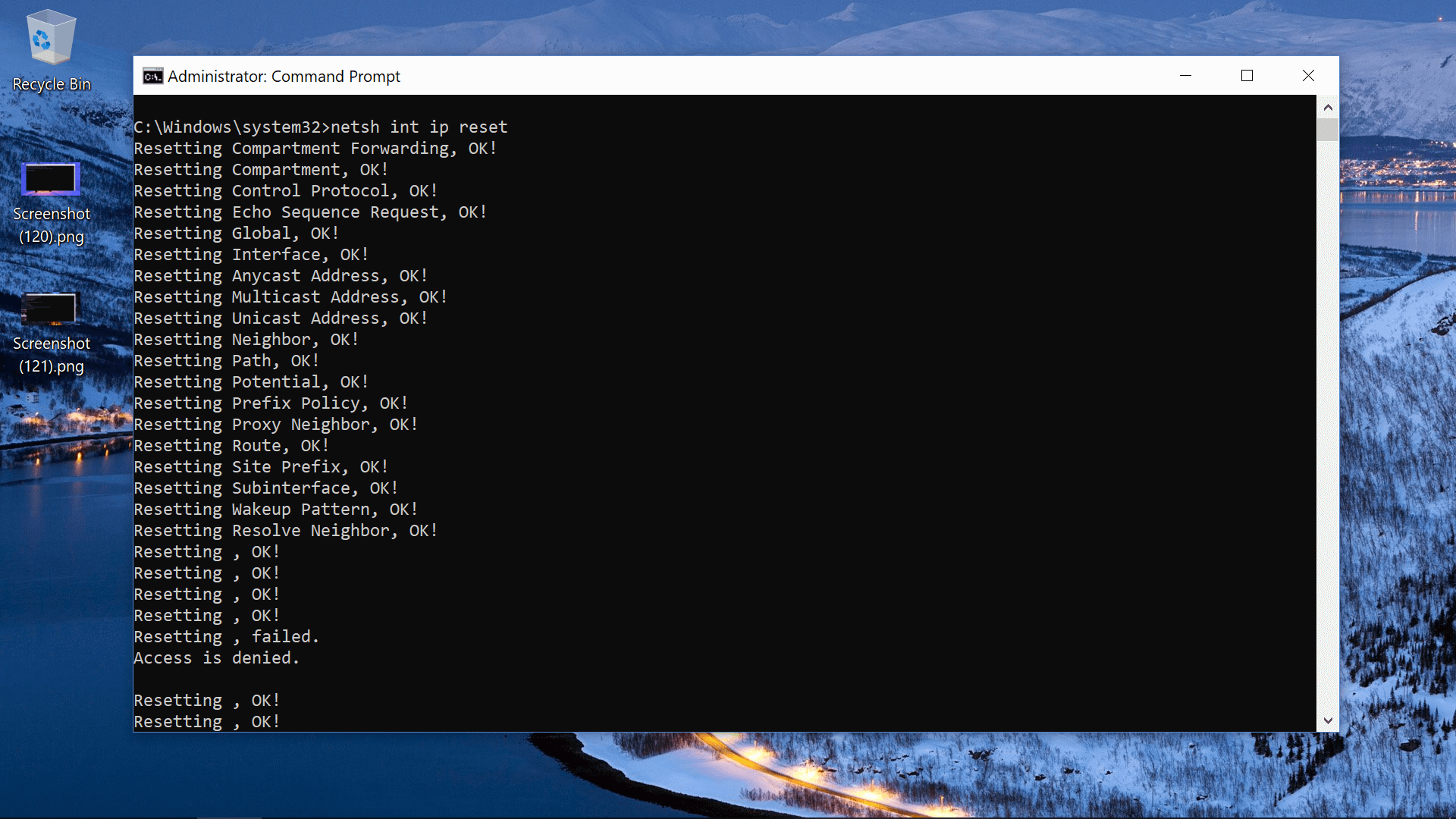
Quick doctor commands for boot issues
Are you greeted with a message that reads "reboot and select proper boot device?" or "NTLDR is missing" when you turn on your PC? The method acting below has worked for us to repair a Windows 8 simple machine and should be valid for other editions of Windows.
Note that these lines must be entered in a Prompt that is opened in a recovery environment from right of your operating system, such as from a bootable USB drive with Windows 10 / Windows 11 installation media.
- bootrec /fixmbr
- bootrec /fixboot
- bootrec /scanos
- bootrec /rebuildbcd
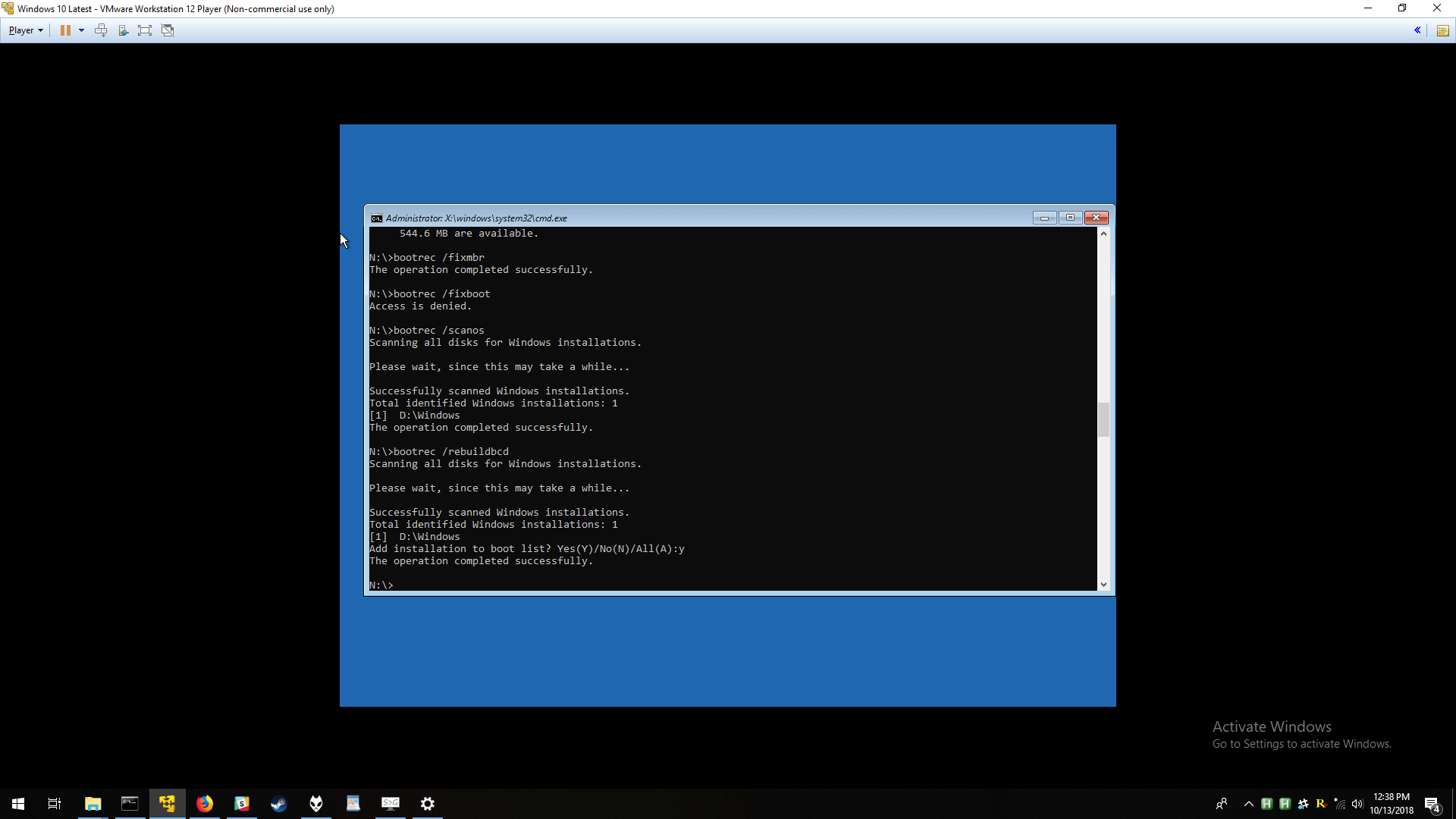
Although that sequence has worked for us in the past, we tested this along a virtual machine by deleting the system reserved partition (where boot information is stored) and trying to restore the bootable state by entering those lines. Unfortunately, access was denied for bootrec /fixboot and we couldn't find a workaround, so Windows still couldn't load.
However, these bcdboot and bootsect commands worked to get Windows booting again, even though we just reformatted the system partition:
- bcdboot C:\Windows (Recreates the system partition off files with those copied from C:\Windows. Piece this format whole kit from within Windows, see the government note below about running this command from a recovery console international of Windows).
- bootsect /nt60 SYS /mbr (Rewrites master bang codification on the system partition and updates your master boot record)
*Federal Reserve note: If you are trying to run bcdboot C:\Windows from a recovery console outside of your Windows installation (such as from the Windows 11 installation media), C:\Windows is credibly D:\Windows (your OS) while C:\ is probably your organization partition (the boot info). Entering diskpart and then list vol wish display drive volumes indeed you know what's what (type exit to close diskpart). To run the bcdboot functioning from a convalescence environment, you want something like this command: bcdboot D:\Windows /s C:\
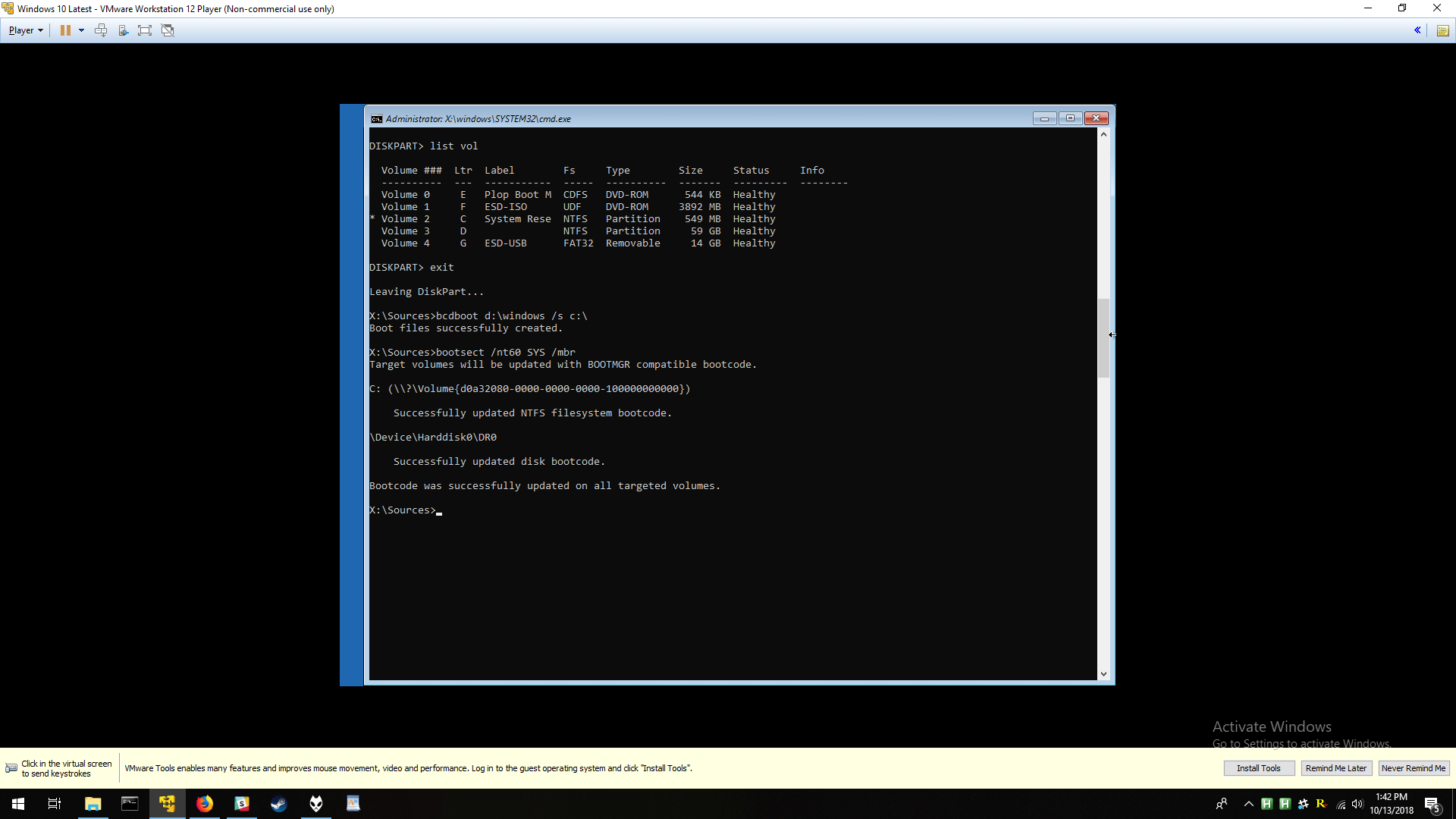
Footnote...
Master Thrill Record - The first sector on the whole drive and contains a boot out loader equally well as information about partitions on the drive.
Volume Boot Record (aka Partition Reboot Sphere/System Sectionalization in MS nomenclature) - The first sector happening a sectionalisatio containing information to load an operation system.
Quick fix commands for repairing Windows
Nevertheless can't boot into Windows? Experiencing blue screens or other bug? The OS has built-in tools to read for and replace corrupt organisation files:
- sfc /scannow (from indoors Windows)
- sfc /scannow /offbootdir=D:\ /offwindir=D:\Windows (from outside Windows, such as from a recovery drive)
A separate DISM command dismiss scan the Windows component store for corrupt files and mechanically repair them:
- DISM /Online /Cleanup spot-Image /RestoreHealth (from inside Windows)
- DISM /Image:D:\ /Cleanup-Image /RestoreHealth (from foreign Windows)
Code, compress or backup files
Files and folders can be encrypted Beaver State compressible and and so unencrypted and decompressed with quick individual commands for to each one operation -- make sure you change the target destination:
Inscribe a file surgery folder: cipher /e C:\Users\TechSpot\Desktop\Folder (here are more nix commands -- /h applies a hidden attribute)
Decipher that file or folder: figure /d C:\Users\TechSpot\Desktop\Folder
Compress a file cabinet or folder: compact /c /s:C:\Users\TechSpot\Screen background\Folder
Decompress a file or folder: compact /u /s:C:\Users\TechSpot\Desktop\Folder
You prat make trailer truck-incremental file backups exploitation robocopy, though this is many involved than the previous commands.
There's a great Super User thread discussing the subject where variants of the same command are recommended for having robocopy do basic file backups, copying files from one placement to another -- but simply when changes induce been made.
Here's the about suggested bid (see the link for an account on the options):
robocopy C:\source M:\destination /MIR /FFT /R:3 /W:10 /Z /NP /NDL
Generate reports about your organisation
These reports are surprisingly detailed and Crataegus laevigata aid in understanding issues involving your system's power consumption Oregon wireless connectivity.

powercfg /DOE (Generates a report all but the push efficiency of your system of rules -- the location of the report is mentioned after the command finishes)
powercfg /batteryreport (Generates a theme with specifications for your battery A well A stats and graphs about the story of your battery utilisation)
netsh wlan show wlanreport (Generates a report with specs for your wireless hardware along with information active your connection account)
Ascertain an ASCII version of Hotshot Wars Episode IV
A assortment of old school telnet services are still available, including the ability to lookout man Major Wars Installment Quaternary.
Go in telnet towel.blinkenlights.nl into a Command Prompt for the movie to start (in that location's no sound).
Note: If the mastery isn't established, you might have to enable telnet. Look Start or the Control board for "Turn Windows features on or off" and watch the boxful next to Telnet (click Ok...).

More places you can go around via telnet:
- telnet towel.blinkenlights.nl 666 (a "bastard wheeler dealer from infernal region" excuse generator)
- telnet telnet.wmflabs.org (Wikimedia)
- telnet rainmaker.wunderground.com (Weather Surreptitious)
- telnet aardmud.org 4000 (Aardwolf)
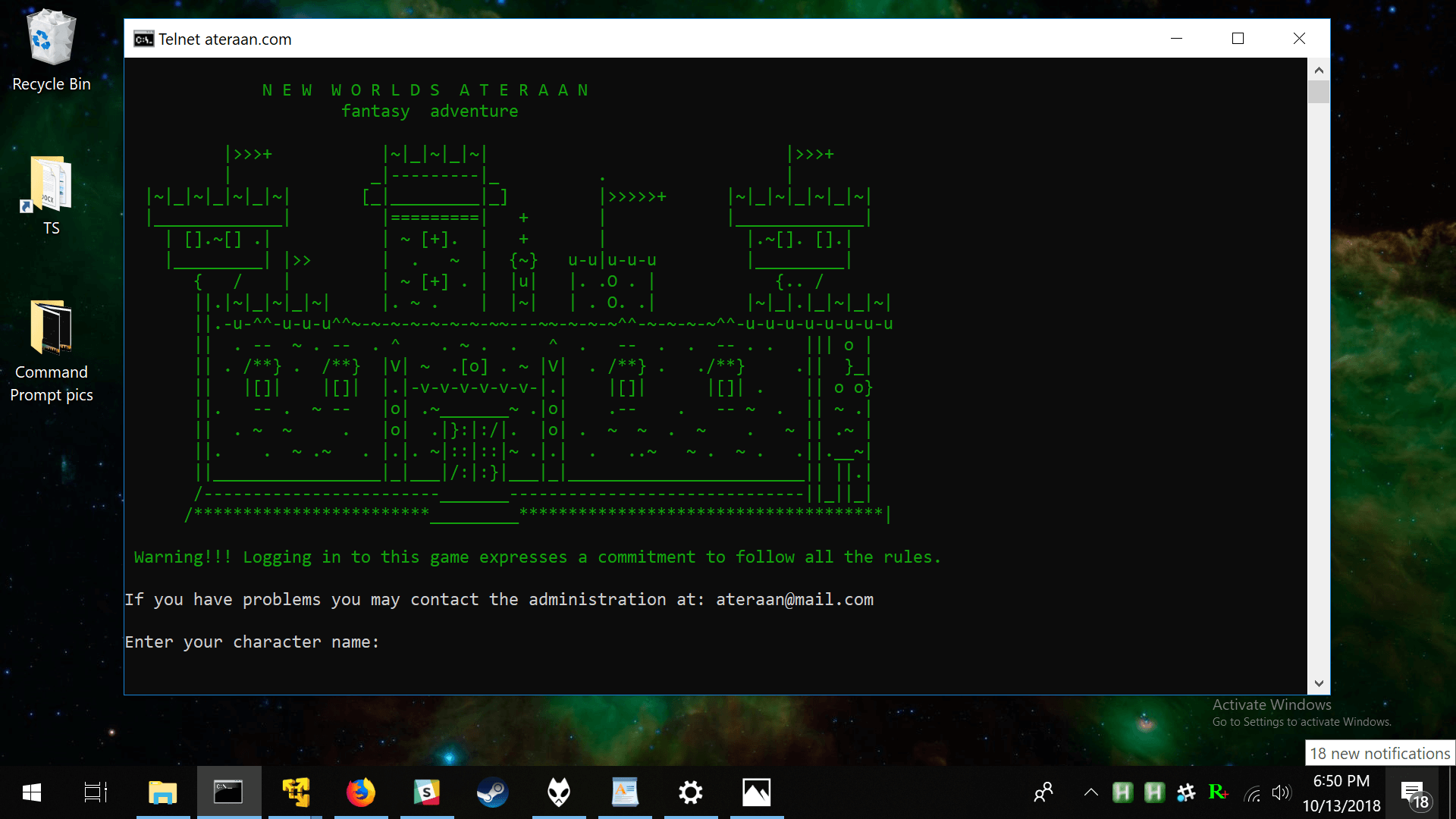
- telnet achaea.com 23 (Achaea)
- telnet ateraan.com 4002 (New Worlds - Ateraan)
- telnet avalon-rpg.com 23 (Avalon: The Caption Lives)
- telnet batmud.bat.org 23 (BatMUD)
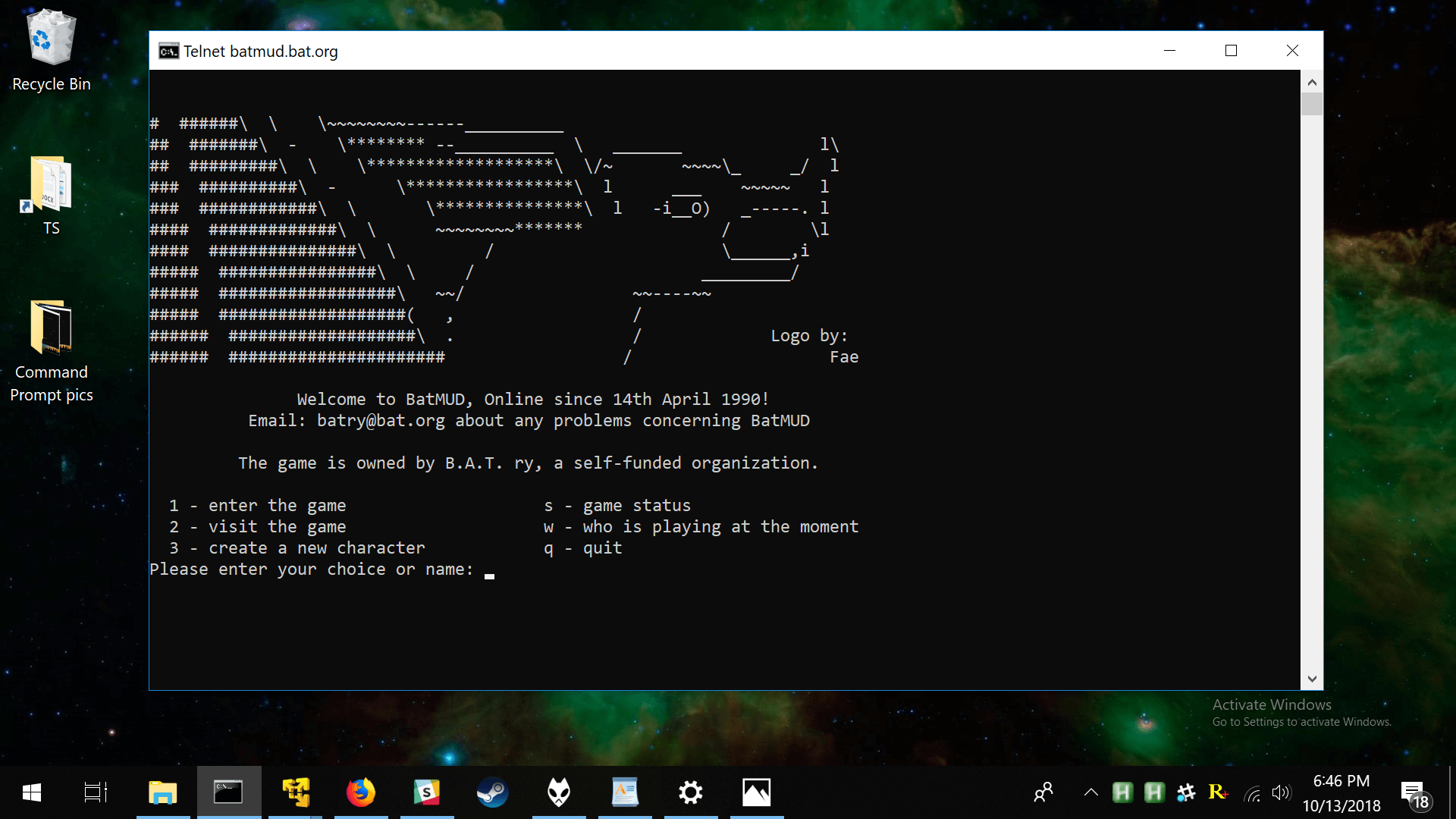
- telnet eclipse.cs.pdx.edu 7680 (New phase of the moon)
- telnet forgottenkingdoms.org 4000 (Forgotten Kingdoms)
- telnet freechess.org 5000 (Free Chess)
- telnet igormud.org 1701 (IgorMUD)
- telnet lord.stabs.org 23 (Legend of the Red Dragon)
- telnet cornmeal mush.shelteringcolorado.com 2601 (Sheltering Toss: Colorado River by Night)
- telnet zombiemud.org 23 (Automaton Muck up)
Note: This feature was originally publicized along October 2018. We have revised some of its content and bumped it due to its erstwhile cultivate nature, as part of our #ThrowbackThursday initiative.
More Useable Tips
- Rundown of Must-Have Portable Apps
- How to Encrypt Files, Folders and Drives on Windows
- 21 Programs to Analyse and Benchmark Your Computer hardware
- "Run as Administrator": What Does It Mean?
Source: https://www.techspot.com/guides/1724-command-prompt-what-you-can-do/
Posted by: cogswellreacquink.blogspot.com


0 Response to "A Compilation of Command Prompt Tips, Tricks & Cool Things You Can Do - cogswellreacquink"
Post a Comment